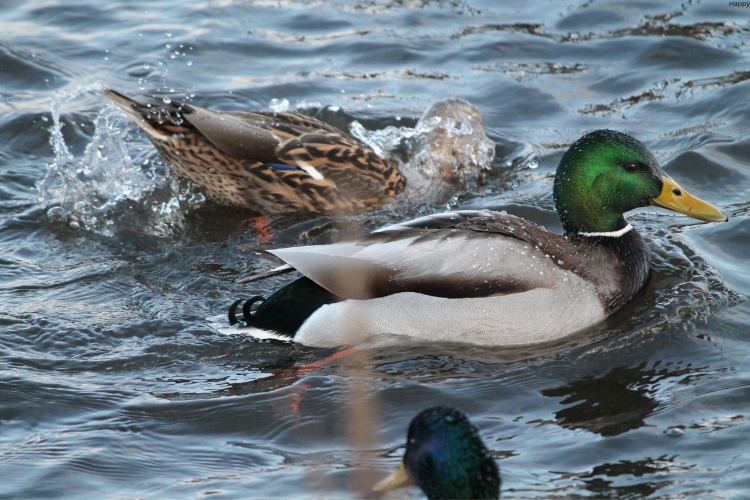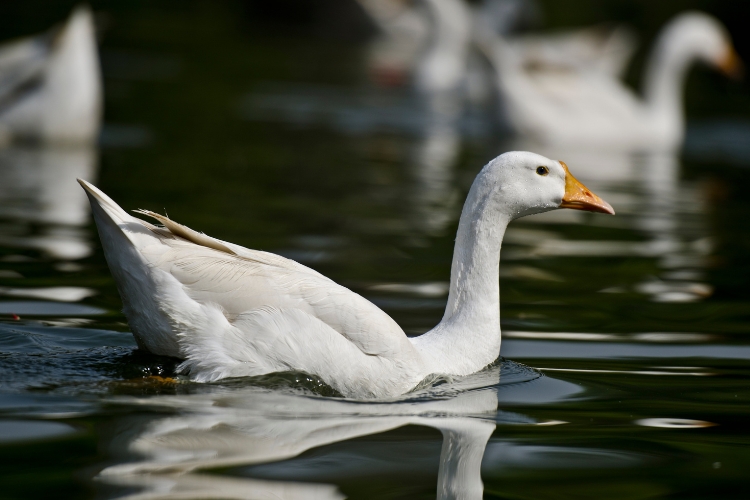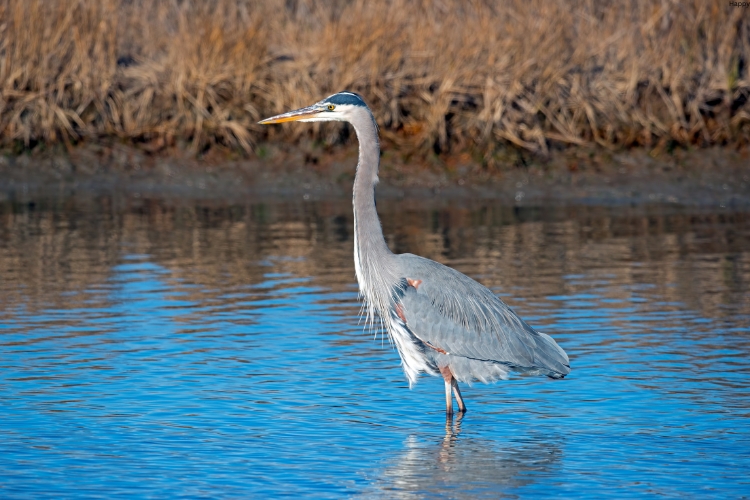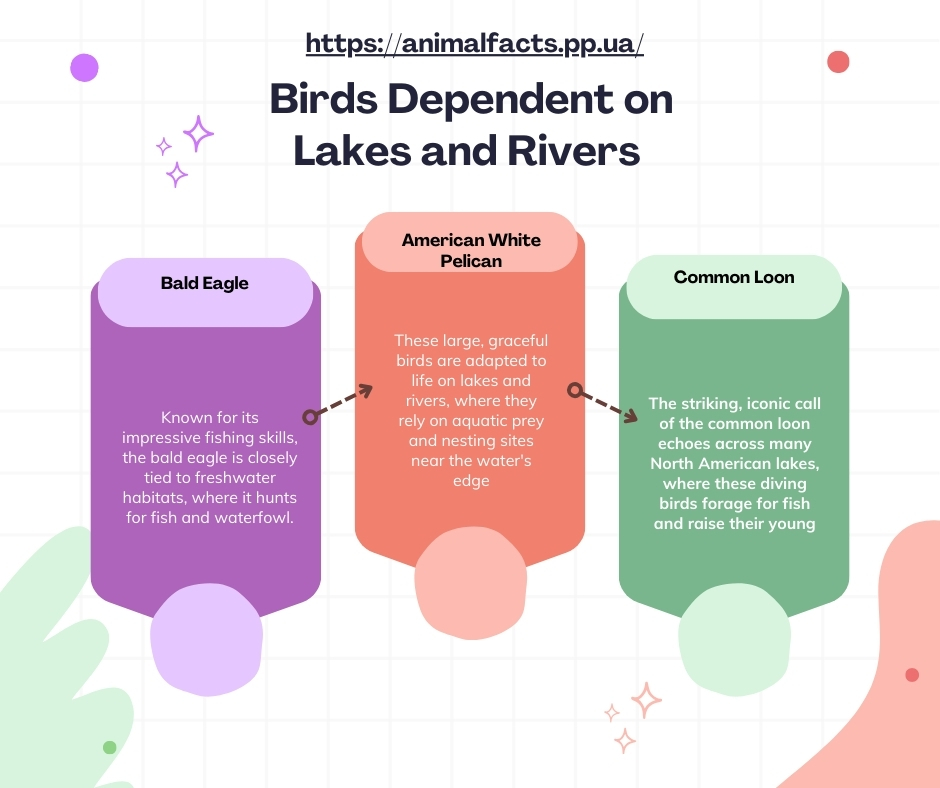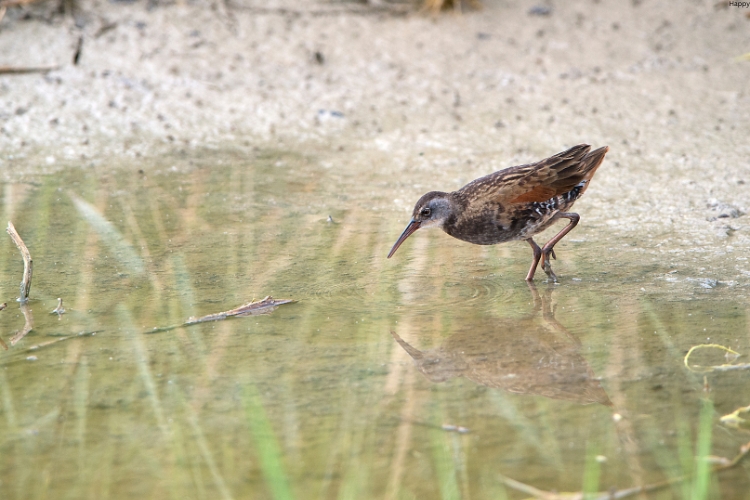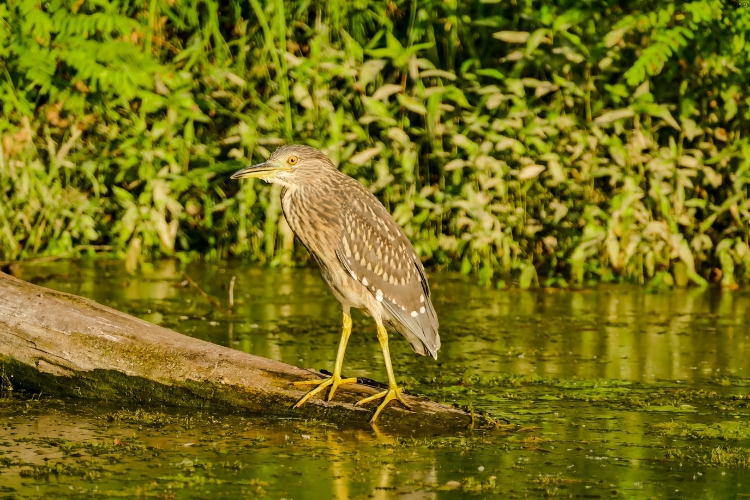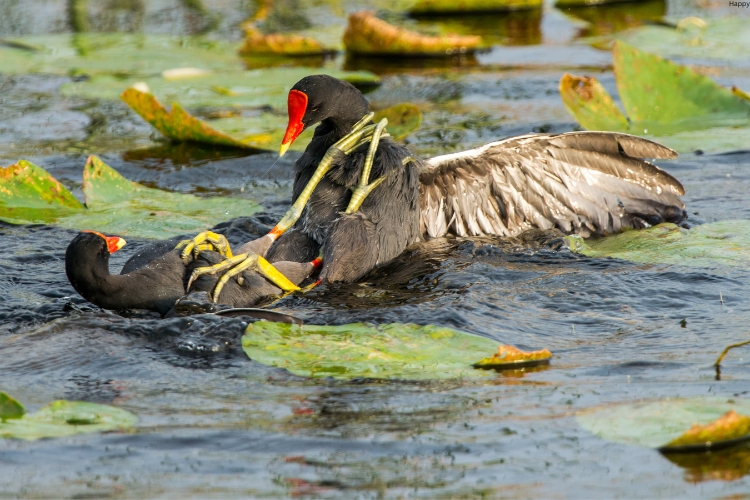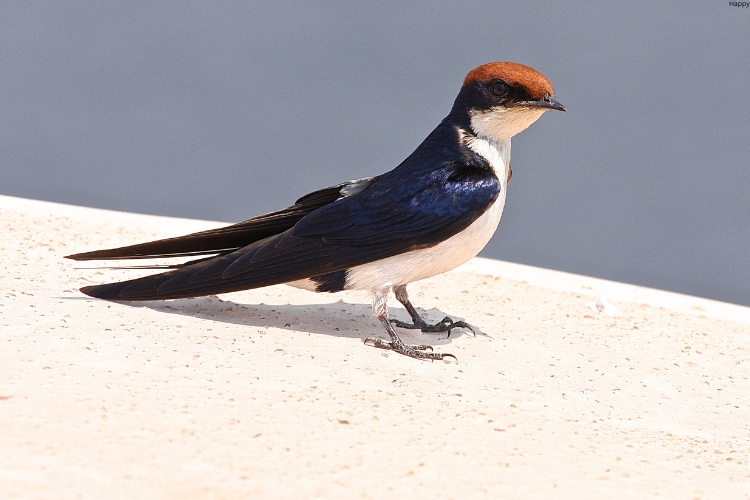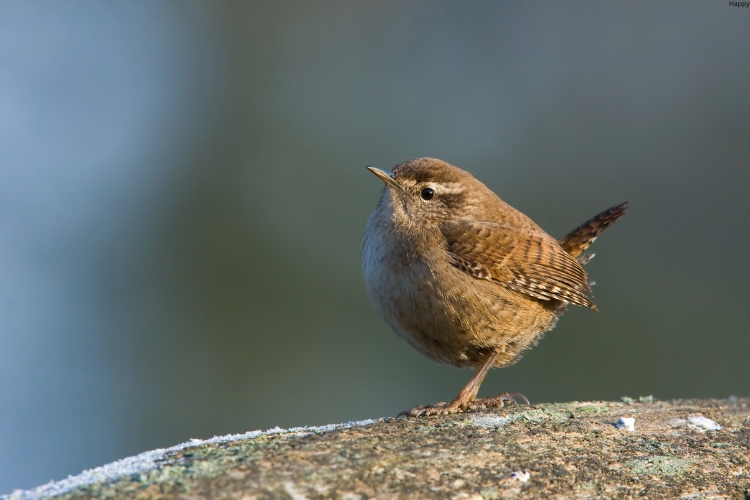The rhythmic songs of birds echoing across shimmering lakes and the graceful dance of waterfowl upon winding rivers paint a captivating picture of the intricate bond between avian species and their aquatic homes.
These freshwater ecosystems, from serene lakes to meandering streams, serve as the lifeblood for a diverse array of feathered inhabitants, providing them with the essential resources and habitats they require to thrive.
Know about the fascinating world where the fate of birds and the health of our waterways are inextricably linked, as we uncover the challenges and conservation efforts that hold the key to preserving this delicate equilibrium.
The Intricate Link Between Birds and Aquatic Habitats
Birds are an integral part of the natural world, playing a crucial role in the delicate balance of various ecosystems.
Among the most vulnerable and dependent avian species are those that rely on lakes, rivers, and other freshwater habitats for their survival.
These aquatic environments provide essential resources, such as food, shelter, and nesting sites, for a diverse array of bird species.
1. The Importance of Freshwater Ecosystems for Birds
Freshwater ecosystems, including lakes, rivers, and wetlands, serve as vital feeding grounds for many bird species. These habitats are home to a wide variety of aquatic flora and fauna, which birds use as a source of sustenance.
From fish and amphibians to aquatic insects and plants, the abundance of food resources in these areas is a key factor in attracting and sustaining bird populations.
2. The Dependence of Nesting and Breeding
In addition to providing foraging opportunities, freshwater habitats also offer critical nesting and breeding grounds for numerous bird species.
Many birds, such as waterfowl, herons, and terns, rely on the sheltered, secluded environments found near lakes and rivers to build their nests and raise their young.
The proximity to water and the availability of suitable nesting sites are essential for the successful reproduction and survival of these birds.
Bird species that are dependent on lakes, rivers, and other freshwater ecosystems:
- Waterfowl:
- Ducks (e.g., mallards, wood ducks, mergansers)
- Geese (e.g., Canada geese, snow geese)
- Swans (e.g., trumpeter swans, mute swans)
- Wading Birds:
- Herons (e.g., great blue heron, green heron, little blue heron)
- Egrets (e.g., snowy egret, great egret)
- Bitterns (e.g., American bittern, least bittern)
- Shorebirds:
- Plovers (e.g., killdeer, piping plover)
- Sandpipers (e.g., spotted sandpiper, solitary sandpiper)
- Stilts (e.g., black-necked stilt)
- Fishing Birds:
- Cormorants (e.g., double-crested cormorant)
- Grebes (e.g., pied-billed grebe, horned grebe)
- Terns (e.g., common tern, Forster’s tern)
- Osprey
- Marsh Birds:
- Rails (e.g., Virginia rail, sora)
- Coots (e.g., American coot)
- Gallinules (e.g., common gallinule)
- Songbirds:
- Swallows (e.g., barn swallow, tree swallow)
- Wrens (e.g., marsh wren, sedge wren)
- Sparrows (e.g., song sparrow, swamp sparrow)
This is not an exhaustive list, as many other bird species, including raptors, gulls, and waterfowl, rely on freshwater habitats for various resources and stages of their life cycle.
The Challenges Facing Birds in Freshwater Ecosystems
Despite the crucial role that freshwater habitats play in the lives of birds, these ecosystems are facing a range of threats that put avian species at risk.
Understanding these challenges is crucial for developing effective conservation strategies to protect birds and their aquatic habitats.
1. Habitat Degradation and Loss
One of the primary threats to birds in freshwater ecosystems is the degradation and loss of their essential habitats.
Human activities, such as urbanization, agricultural expansion, and infrastructure development, have resulted in the destruction and fragmentation of lakes, rivers, and wetlands.
This loss of suitable habitat can force birds to relocate or compete for limited resources, ultimately leading to population declines.
2. Pollution and Contamination
Freshwater ecosystems are also vulnerable to various forms of pollution, including chemical runoff, oil spills, and the accumulation of plastic waste.
These contaminants can have devastating effects on the food chain, rendering the water and its inhabitants unsafe for birds to consume.
The bioaccumulation of toxins in the bodies of birds can lead to a range of health issues, such as reproductive problems, neurological disorders, and even death.
3. Climate Change and Altered Hydrology
The impacts of climate change are also taking a toll on freshwater ecosystems and the birds that depend on them.
precipitation patterns, rising temperatures, and altered hydrology can disrupt the delicate balance of these habitats, leading to water scarcity, habitat changes, and the disruption of migratory patterns for bird species.
Conservation Efforts to Protect Birds and Their Aquatic Habitats
To safeguard the future of birds that rely on freshwater ecosystems, a multifaceted approach to conservation is necessary.
By implementing various strategies and collaborating with stakeholders, we can work towards protecting these vital habitats and the avian species that call them home.
1. Habitat Restoration and Protection
One of the primary goals of conservation efforts is to restore and protect the critical habitats that birds depend on.
This can involve initiatives such as wetland restoration, river and lake management, and the establishment of protected areas and wildlife refuges.
By ensuring the availability of suitable nesting sites, foraging grounds, and migratory stopover locations, we can help sustain and even enhance bird populations.
2. Pollution and Waste Reduction
Reducing the impact of pollution and waste on freshwater ecosystems is crucial for protecting the birds that rely on them.
This can involve initiatives such as implementing stricter regulations on industrial waste, promoting sustainable agricultural practices, and encouraging the proper disposal and recycling of plastic and other pollutants.
3. Collaborative Efforts and Public Engagement
Effective conservation of birds and their aquatic habitats requires the involvement of various stakeholders, including government agencies, environmental organizations, and local communities.
By fostering collaboration and public engagement, we can develop comprehensive strategies, share best practices, and inspire individuals to take action in their local areas.
The Role of Bird-Friendly Practices in Freshwater Conservation
In addition to larger-scale conservation efforts, individuals and communities can also play a crucial role in protecting birds and their aquatic habitats.
By adopting bird-friendly practices and promoting awareness, we can contribute to the long-term sustainability of these vital ecosystems.
1. Backyard Habitat Creation
Creating bird-friendly habitats in our own backyards can have a tangible impact on local bird populations.
This can involve planting native vegetation, providing clean water sources, and avoiding the use of pesticides and other harmful chemicals.
By offering a safe and nourishing environment, we can support birds that rely on freshwater habitats.
2. Citizen Science and Monitoring
Engaging in citizen science projects and monitoring bird populations can provide valuable data for conservation efforts. By participating in programs such as bird counts and habitat surveys, individuals can contribute to our understanding of avian species and their interactions with freshwater ecosystems. This information can inform decision-making and guide the development of targeted conservation strategies.
3. Advocacy and Education
Raising awareness and advocating for the protection of birds and their aquatic habitats is essential for driving meaningful change.
By educating ourselves and others about the importance of these ecosystems, we can inspire action and encourage policy-makers and decision-makers to prioritize conservation efforts.
Key Takeaways
- Freshwater ecosystems, such as lakes, rivers, and wetlands, provide essential resources for a variety of bird species, including food, shelter, and nesting sites.
- Birds that rely on these aquatic habitats are facing numerous challenges, including habitat degradation, pollution, and the impacts of climate change.
- Effective conservation efforts involve habitat restoration and protection, reducing pollution and waste, and collaboration among various stakeholders.
- Individuals can contribute to the protection of birds and their aquatic habitats by creating bird-friendly backyard habitats, participating in citizen science projects, and advocating for conservation.
- Optimizing content for Google Voice Search, using natural language, long-tail keywords, and structured data, can help ensure the information is accessible and relevant for users.
FAQs
Q: What are the key reasons why birds depend on freshwater ecosystems?
A: Birds rely on freshwater ecosystems for essential resources, such as food, shelter, and nesting sites. These habitats provide a diverse array of aquatic flora and fauna that serve as a source of sustenance for many bird species. Additionally, the sheltered and secluded environments near lakes and rivers offer critical breeding and nesting grounds for birds.
Q: What are the main threats to birds that depend on freshwater habitats?
A: The primary threats facing birds in freshwater ecosystems include habitat degradation and loss due to human activities, pollution and contamination of water sources, and the impacts of climate change on hydrology and habitat suitability.
Q: How can individuals contribute to the conservation of birds and their aquatic habitats?
A: Individuals can contribute by creating bird-friendly habitats in their backyards, participating in citizen science projects to monitor bird populations, and advocating for the protection of freshwater ecosystems through education and outreach efforts.
Q: What strategies can be used to optimize content for Google Voice Search?
A: Key strategies include using natural language, incorporating long-tail keywords, providing direct answers to common questions, optimizing for featured snippets, implementing structured data, and ensuring mobile optimization.
Q: Why is it important to consider the unique needs and challenges of birds that depend on freshwater habitats?
A: Birds that rely on lakes, rivers, and wetlands are particularly vulnerable to the threats facing these ecosystems. By understanding their specific requirements and the challenges they face, we can develop targeted conservation strategies to protect these avian species and the vital freshwater habitats they depend on.

